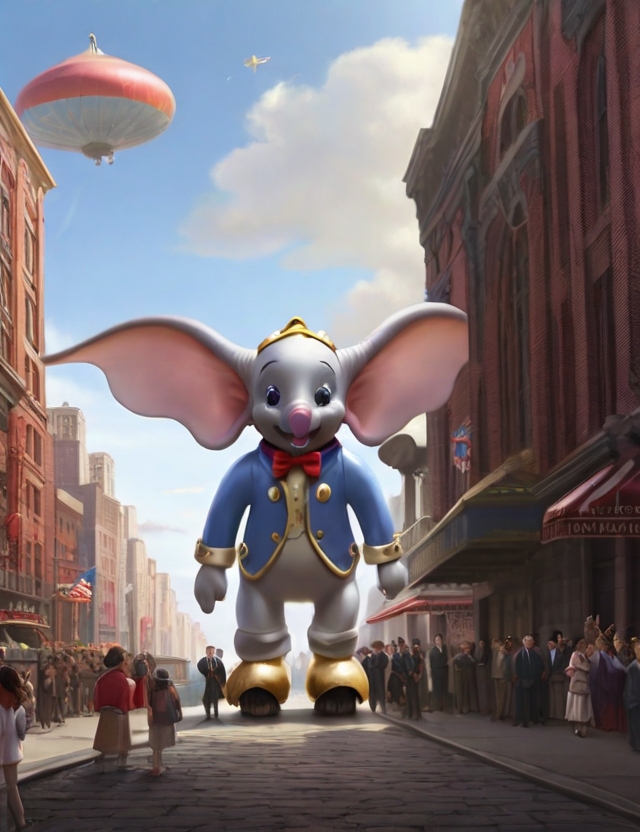
When you first hear the name, Dumbo, you might think of the famous Disney movie about a flying elephant. But did you know that Dumbo is also the name of a neighborhood in New York City? Located in Brooklyn, Dumbo has a unique name with an equally fascinating backstory. Let’s dive in and uncover the true meaning behind Dumbo, New York.
Key Takeaways:
- Dumbo is a neighborhood in Brooklyn, New York.
- Dumbo has a unique name with an intriguing history and meaning.
- In this article, we will explore the origins of Dumbo as a thriving industrial area and how it transformed into a hub for innovation and creativity.
The Origins of Dumbo: A Thriving Industrial Past
It’s hard to imagine the now-bohemian neighborhood of Dumbo in New York City as an industrial hub, but this is precisely how it began. Dumbo, short for Down Under the Manhattan Bridge Overpass, traces its roots back to the 1800s when it was home to factories and warehouses that contributed to the city’s booming industrialization.
The neighborhood’s prime location along the East River made it a popular spot for waterfront industries, including coffee roasters, soap makers, and Brillo pad makers. The construction of the Manhattan Bridge in 1909 further boosted the area’s industrialization, allowing for easy transportation of goods in and out of the city.
The area became dotted with factories, most notably the Arbuckle Brothers Sugar Refinery, which was the largest sugar refinery in the world at the time, processing over 1.25 million pounds of raw sugar every day. The factory closed in the early 20th century, and its iconic sign remains as a reminder of the neighborhood’s industrial past.
Another key establishment in the neighborhood’s industrial history is the Empire Stores, a series of seven interconnected warehouses along the waterfront built between 1869 and 1885. The warehouses were used to store coffee and served as a critical hub for Brooklyn’s coffee roasting industry. Over the years, the Empire Stores continued to operate as warehouses until they were abandoned in the mid-20th century.
As the shipping industry declined in the 1960s, so did the neighborhood’s thriving industrial landscape. Many warehouses and factories were abandoned and fell into disrepair, and the once-bustling area turned into a ghost town.
However, the historic charm of the buildings and the neighborhood’s prime location caught the attention of artists and entrepreneurs, who saw the potential for revitalization. In the next section, we will explore how Dumbo’s transformation from industrial to innovation hub began.
The Transformation of Dumbo: From Industrial to Innovation Hub
Over the years, Dumbo has undergone a remarkable transformation, evolving from a once-thriving industrial hub to a vibrant center for innovation and creativity. This transformation has been driven by a dynamic mix of artists, tech companies, and entrepreneurs who have flocked to the neighborhood, attracted by its unique character and exceptional atmosphere.
As old warehouses and factories have been repurposed into lofts and offices, Dumbo has emerged as a sought-after destination for culture and entrepreneurship. The neighborhood’s historic charm, combined with its modern amenities and cutting-edge technology, has created a perfect balance between old-world charm and new-world innovation.
Dumbo’s transformation has been nothing short of extraordinary. Today, the neighborhood is home to some of New York City’s most innovative firms, including media companies, tech startups, and design studios. Its streets are filled with art galleries, boutiques, and trendy restaurants, making it a hub of creativity and inspiration.
This exceptional transformation of Dumbo has been a testament to the power of innovation and creativity. It is a true reflection of the neighborhood’s resiliency and adaptability, and how a once-thriving industrial hub can be transformed into a modern innovation hub that draws people from all walks of life.
Conclusion
Exploring the rich history and vibrant energy of Dumbo, New York, we unveil the meaning behind this unique neighborhood’s name. From its thriving industrial past to its current status as an innovation hub, Dumbo represents a fascinating blend of old and new. As artists, tech companies, and entrepreneurs continue to flock to the area, Dumbo’s legacy as a vibrant cultural and economic center only grows stronger. So, if you’re looking for a captivating and inspiring destination in New York City, be sure to add Dumbo to your must-visit list!
FAQ
What is the meaning behind the name “Dumbo” in New York City?
The name “Dumbo” is an acronym that stands for “Down Under the Manhattan Bridge Overpass.” It was given to the neighborhood due to its close proximity to the Manhattan Bridge and its location beneath the bridge’s overpass.
How did Dumbo become an industrial area?
Dumbo emerged as an industrial area in the late 19th century with the construction of warehouses, factories, and manufacturing facilities. Its prime location near the East River and accessible transportation routes made it an attractive hub for industries such as manufacturing, printing, and coffee roasting.
How has Dumbo transformed into an innovation hub?
Over the years, Dumbo has undergone a significant transformation from an industrial area to an innovation hub. The abandoned warehouses and factories attracted artists and creative thinkers who saw the potential in the neighborhood’s industrial architecture. Today, Dumbo is home to numerous tech companies, startups, and creative agencies, making it a thriving center for innovation and entrepreneurship.
 Moshpitopen Your Ultimate Destination for Fashion, Travel And Education
Moshpitopen Your Ultimate Destination for Fashion, Travel And Education
